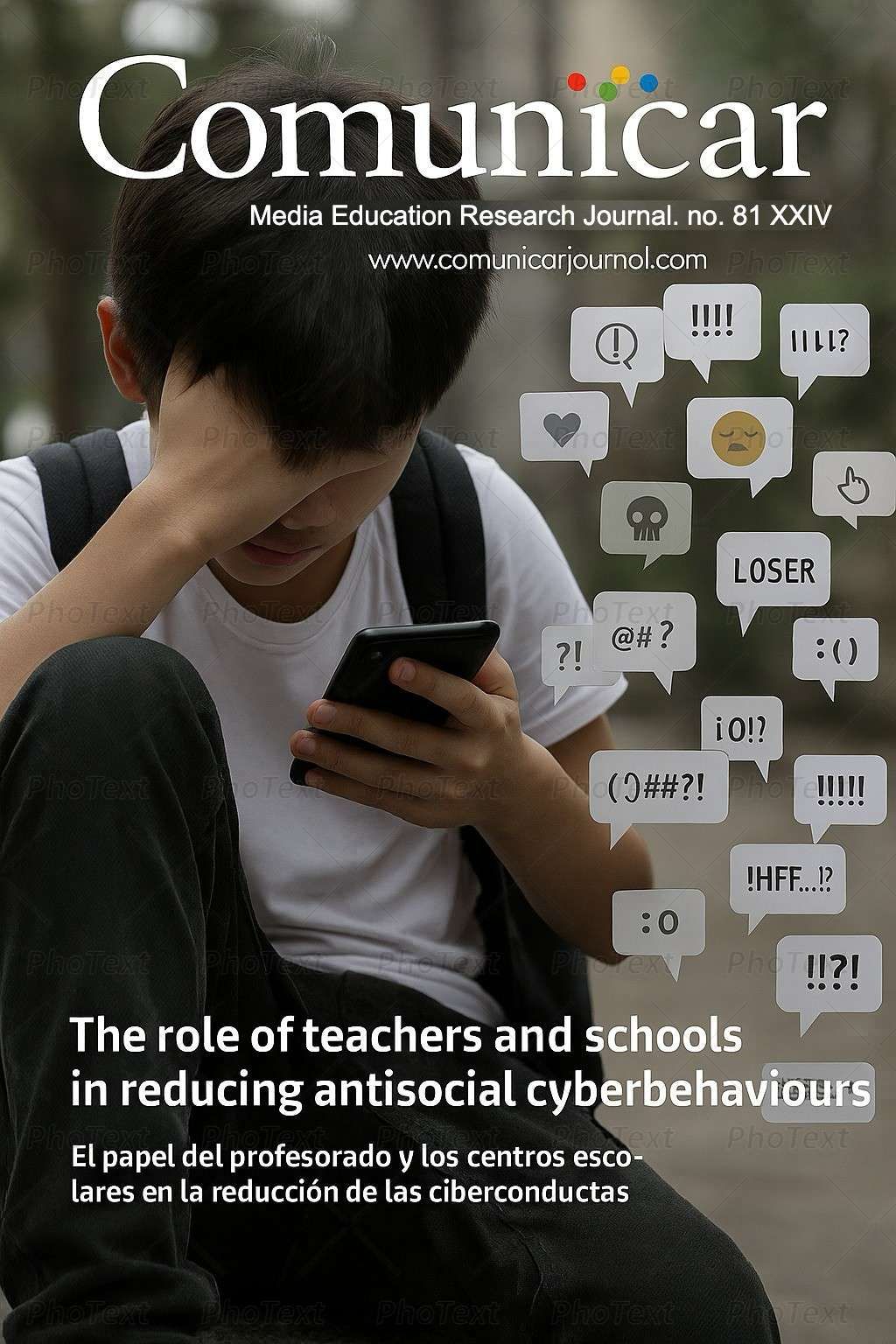Influence of Dominant Communication Media on Knowledge: Case of University Students
DOI:
https://doi.org/10.5281/zenodo.15571115Keywords:
Media Influence, Dominant Digital Media, Knowledge, Fuzzy Cognitive Maps, University Students, ChileAbstract
There is widespread concern regarding the influence—partly negative—of dominant digital social media (e.g., TikTok) on knowledge. This influence impacts various areas, such as time available for study, customs, and emotional well-being. Several models have been used to study media influence on opinion using fuzzy cognitive maps. This study presents a model of this type, which differs from previous models by focusing on the specific influence of digital media on the knowledge of university students and incorporating concepts not considered in previous models, such as digital wisdom. The model has four conceptual layers: the individual level, including concepts like habits of using dominant and alternative digital media, digital wisdom, and emotional well-being; the social level, which considers concepts like dominant and alternative digital media, social structure, and face-to-face interaction; the knowledge level, based on communication characteristics according to the theory of the wisdom of crowds, including notions such as diversity of perspectives and knowledge sources; and finally, the knowledge quality assessment level. Results for the case of students at the Universidad Católica del Norte, Coquimbo campus, indicate a high influence of dominant digital media, resulting in low knowledge quality.
References
Aguilar, J. y Terán, O. (2015). Social Media and Free Knowledge: Case Study – Public Opinion Formation. En O. Terán y J. Aguilar (Eds.), Societal Benefits of Freely Accessible Technologies and Knowledge Resources (pp. 156-190). IGI Global. https://doi.org/10.4018/978-1-4666-8336-5.ch007
Carr, N. (2020). The Shallows: What the Internet Is Doing to Our Brains. WW Norton & Company. https://wwnorton.com/books/9780393357820
Clore, G. L. y Ortony, A. (2000). Cognition in Emotion: Always, Sometimes, or Never? En R. D. Lane y L. Nadel (Eds.), Cognitive Neuroscience of Emotion (pp. 24-61). Oxford University Press. https://doi.org/10.1093/oso/9780195118889.003.0003
Fuchs, C. (2014). Social Media: A Critical Introduction. SAGE Publications. https://doi.org/10.4135/9781446270066
Fuenmayor, R. (1991). The self-referential structure of an everyday-living situation: A phenomenological ontology for interpretive systemology. Systems Practice, 4(5), 449-472. https://doi.org/10.1007/BF01104461
Gillespie, T. (2014). The Relevance of Algorithms. En T. Gillespie, P. J. Boczkowski, y K. A. Foot (Eds.), Media Technologies: Essays on Communication, Materiality, and Society. The MIT Press. https://doi.org/10.7551/mitpress/9042.003.0013
Habermas, J. (1987). Teoría de la acción comunicativa. Taurus, Madrid.
Jaramillo-Hoyos, A. (2002). Pistas para redactar una agenda de investigación en medios de comunicación. Comunicar, 18, 41-45. https://doi.org/10.3916/C18-2002-07
Jenkins, H. (2006). Convergence Culture: Where Old and New Media Collide. NYU Press. https://nyupress.org/9780814742952/convergence-culture
Kaplan, A. M. y Haenlein, M. (2010). Users of the world, unite! The challenges and opportunities of Social Media. Business Horizons, 53(1), 59-68. https://doi.org/10.1016/j.bushor.2009.09.003
Kosko, B. (1986). Fuzzy cognitive maps. International Journal of Man-Machine Studies, 24(1), 65-75. https://doi.org/10.1016/S0020-7373(86)80040-2
Lajnef, K. (2023). The effect of social media influencers’ on teenagers Behavior: an empirical study using cognitive map technique. Current Psychology, 42(22), 19364-19377. https://doi.org/10.1007/s12144-023-04273-1
Lih, A. (2009). The Wikipedia Revolution: How a Bunch of Nobodies Created the World’s Greatest Encyclopedia. Hyperion.
Mccombs, M. E. y Shaw, D. L. (1972). The Agenda-Setting Function of Mass Media. Public Opinion Quarterly, 36(2), 176-187. https://doi.org/10.1086/267990
McQuail, D. (2010). McQuail’s Mass Communication Theory (6th ed.). SAGE Publications.
Nápoles, G., Espinosa, M. L., Grau, I. y Vanhoof, K. (2018). FCM Expert: Software Tool for Scenario Analysis and Pattern Classification Based on Fuzzy Cognitive Maps. International Journal on Artificial Intelligence Tools, 27(07), 1860010. https://doi.org/10.1142/s0218213018600102
Özesmi, U. y Özesmi, S. L. (2004). Ecological models based on people’s knowledge: a multi-step fuzzy cognitive mapping approach. Ecological Modelling, 176(1), 43-64. https://doi.org/10.1016/j.ecolmodel.2003.10.027
Page, S. (2008). The Difference: How the Power of Diversity Creates Better Groups, Firms, Schools, and Societies - New Edition. Princeton University Press. https://doi.org/10.1515/9781400830282
Papageorgiou, E. y Kontogianni, A. (2012). Using Fuzzy Cognitive Mapping in Environmental Decision Making and Management: A Methodological Primer and an Application. En S. Young (Ed.), International Perspectives on Global Environmental Change (pp. 427-450). InTech. https://doi.org/10.5772/29375
Papageorgiou, E. I. y Salmeron, J. L. (2013). A Review of Fuzzy Cognitive Maps Research During the Last Decade. IEEE Transactions on Fuzzy Systems, 21(1), 66-79. https://doi.org/10.1109/TFUZZ.2012.2201727
Perozo, N., Aguilar, J., Terán, O. y Molina, H. (2012). A Verification Method for MASOES. IEEE Transactions on Cybernetics, 43(1), 64-76. https://doi.org/10.1109/TSMCB.2012.2199106
Prensky, M. R. (2010). Teaching Digital Natives: Partnering for Real Learning. Corwin Press. https://www.corwin.com/books/teaching-digital-natives-233944
Rubio Ferreres, J. M. (2009). Opinión pública y medios de comunicación. Teoría de la agenda setting. Gazeta de Antropología, 25(1), 01. https://doi.org/10.30827/Digibug.6843
Salmeron, J. L. (2009). Augmented fuzzy cognitive maps for modelling LMS critical success factors. Knowledge-Based Systems, 22(4), 275-278. https://doi.org/10.1016/j.knosys.2009.01.002
Sánchez, H., Aguilar, J., Terán, O. y Gutiérrez de Mesa, J. (2019). Modeling the process of shaping the public opinion through Multilevel Fuzzy Cognitive Maps. Applied Soft Computing, 85, 105756. https://doi.org/10.1016/j.asoc.2019.105756
Scheufele, D. A. (2000). Agenda-Setting, Priming, and Framing Revisited: Another Look at Cognitive Effects of Political Communication. Mass Communication and Society, 3(2-3), 297-316. https://doi.org/10.1207/S15327825MCS0323_07
Sunstein, C. R. (2006). Infotopia: How Many Minds Produce Knowledge. Oxford University Press. https://doi.org/10.1093/oso/9780195189285.001.0001
Surowiecki, J. (2005). The Wisdom of Crowds. Random House, USA. https://www.randomhousebooks.com/books/175380
Terán Villegas, O. R. y Aguilar Castro, J. L. (2018). Modelo del proceso de influencia de los medios de comunicación social en la opinión pública. Educere, 22(71), 179-191. https://www.redalyc.org/journal/356/35656002014/html
Downloads
Published
How to Cite
Issue
Section
License
Copyright (c) 2025 Comunicar

This work is licensed under a Creative Commons Attribution-NonCommercial-NoDerivatives 4.0 International License.


